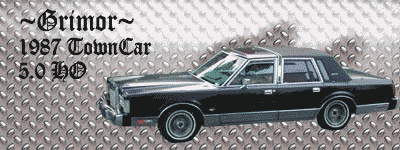A cap can help sustain a regular voltage for like....no time at all. You will never (well...probably never) see a cap with low enough ESL/ESR values to actually provide current for a second.
So without further adu, here is the proof that a cap does not work for increasing SPL. Done by Richard Clark....
http://www.welcometotheden.8k.com/caraudio/Captest.pdf#search='richard%20clark%20capacitor'
 Dark Blue curve
Dark Blue curve--no cap and engine off
For our first test we played the system with the engine off and no cap. The result
was the purple trace at the bottom. We played the system as loud as we could get it
that seemed to produce no audible distortion. This was track 30 of the IASCA disc. It
starts off with fairly low level sounds for the first 34 seconds. In order to insure the
electrical system was stable we did not start the measurement until we were 20
seconds into the song. This means that our 0 starting point is :20 on the CD counter.
The battery was able to maintain it's voltage just below 12.5 until the loud bass hits
at 34 seconds (14 seconds into our chart) At this time it dropped to about 11.5 and
had a few large variations due to the music. According to the computer calculations
(third chart) the average voltage for this test was 11.7volts. This test was done as a
baseline for the following tests.
Yellow curve--no cap
For this test the volume was left as it was for the baseline test. The engine was
started. Notice that at low volume the alternator was able to maintain about 14
volts. When the loud music hit the voltage dropped to about 12.5 where it remained
except for a few short moments where it actually climbed back to over 13.5 volts.
The computer averaged calculations for the average voltage during the 100 seconds of this test was 12.973 volts.
Red curveócap added
This test was identical to the previous test except the cap (15 farad type) was added
6 inches from the amp with 4 gauge wireóno relays or fuses. The red curve seems
to overlay the yellow except that the actual peaks donít rise as fast or as high during
the brief quiet moments. I feel this would be due to the alternator having to recharge
the cap. The voltage on loud passages hovered around 12.5 volts. The computer
averaged calculations for this test show the average voltage to be 12.878 volts. I see
no meaningful differences with or without the cap. I certainly donít see the voltage
sitting solid at 14 volts.
One note I might add is that this was a two thousand watt system driven right to
clipping and the average voltage stayed above 12.8 with a stock 80 amp alternator.
Under these conditions the battery would never discharge!
Green and Light Blue Curves--Fun
The green and light blue curves were done just for kicks while we had the system set
up. In both these tests we turned the volume up until the system was very distorted.
This placed a severe load on the alternator and caused the voltage to dip as low as
12 volts. The curves seem to follow each other so closely that unless you have a
good monitor it is doubtful you can tell there are two curves. The average voltage for
these two curves were both 12.277 and 12.295 volts. If this volume were sustained
for very long periods of time this battery would discharge.
kyle














